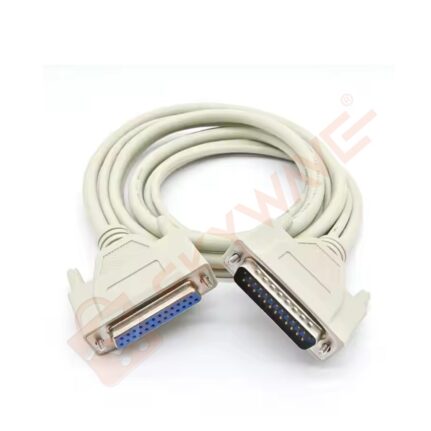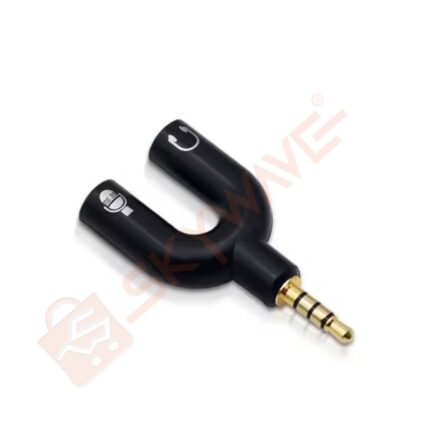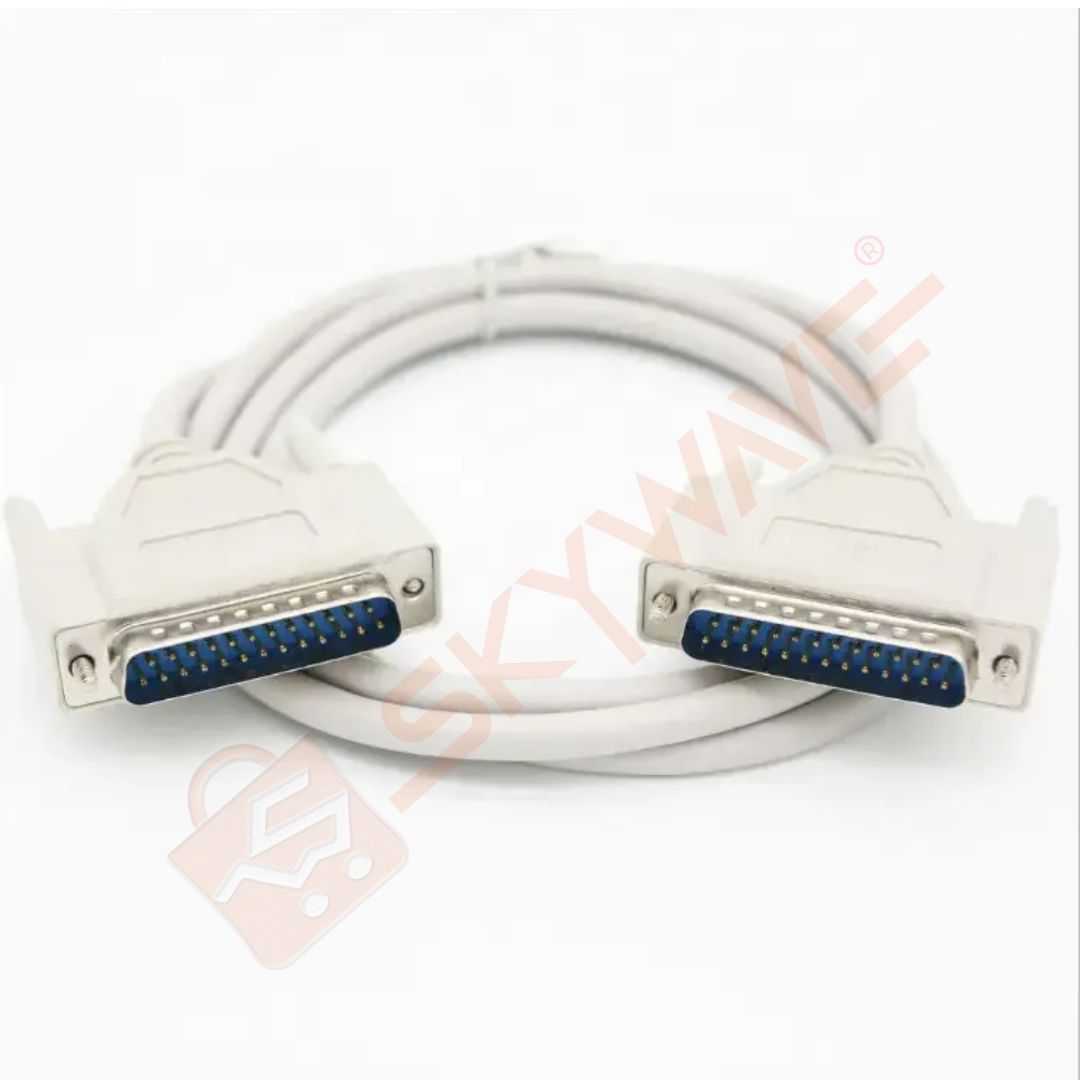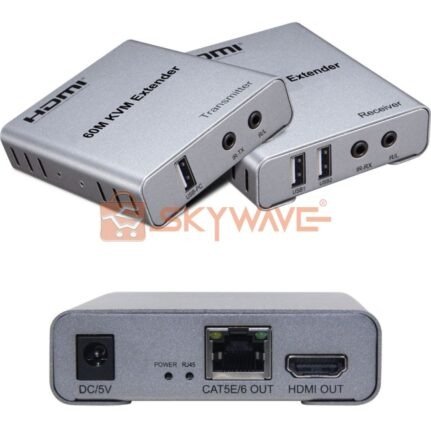

Parallel serial cable female to female RS232
KSh800 Original price was: KSh800.KSh600Current price is: KSh600.
- Standard for serial communication
- Supports asynchronous data transmission
- Widely used in industrial and computing applications
- Connects computers and peripherals
- Operates at low baud rates (up to 115.2 kbps)
- Supports full-duplex communication
- Uses DB9 or DB25 connectors
- Defined voltage levels for signal integrity
- Commonly used for modems, printers, and data loggers
- Maximum cable length of 15 meters
- Requires point-to-point connection
- Simple and reliable protocol
- Legacy compatibility with older systems
- Minimal hardware requirements
- Industry-standard for decades
| Weight | 5 kg |
|---|---|
| color |
White |
Parallel Serial Cable Female to Female RS232
The Parallel Serial Cable Female to Female RS232 is a fundamental component used to establish a stable, efficient communication link between devices. This cable, widely recognized for its simplicity and reliability, has been an industry standard for decades. Its ability to provide serial communication for both parallel and serial transmission ensures that data transfer between computers and peripherals occurs efficiently, even in the most demanding industrial and computing environments. Whether for legacy systems or modern-day applications, the Parallel Serial Cable Female to Female RS232 remains a crucial part of the connectivity ecosystem.
-
RS232: The Standard for Serial Communication
RS232, which stands for Recommended Standard 232, is a well-established standard for serial communication used to transmit data between devices over a short distance. RS232 defines the voltage levels and the pinouts for connectors, which are key for maintaining signal integrity across serial links. The Parallel Serial Cable Female to Female RS232 utilizes these protocols to establish reliable communication, ensuring that data flows seamlessly between devices while maintaining accuracy.
This serial communication standard is utilized in a wide range of devices, from modems to industrial machines. By operating at lower baud rates (up to 115.2 kbps), RS232 is particularly well-suited for applications that do not require high-speed data transfer but demand reliability and simplicity. This is why the Parallel Serial Cable Female to Female RS232 is ideal for long-term use, even in environments that rely on older technology.
-
Supports Asynchronous Data Transmission
One of the key advantages of the Parallel Serial Cable Female to Female RS232 is its ability to support asynchronous data transmission. Asynchronous transmission means that data can be sent without requiring synchronization between the sender and receiver devices. This method of data transfer is widely used in scenarios where precise timing isn’t essential but consistent and reliable communication is needed. For instance, modems, printers, and data loggers, which typically operate with asynchronous protocols, can easily communicate using the Parallel Serial Cable Female to Female RS232.
-
Widely Used in Industrial and Computing Applications
The Parallel Serial Cable Female to Female RS232 is a staple in many industrial and computing applications. In the industrial sector, it is often used to connect machines, sensors, and control systems, ensuring smooth data transfer between different equipment. Its reliability and simple functionality make it a go-to choice for factory automation, process control systems, and instrumentation.
In the world of computing, the cable remains relevant for connecting legacy devices, such as old computers, printers, and modems, to more modern systems. Even with the growth of newer technologies, the Parallel Serial Cable Female to Female RS232 is still crucial in maintaining the communication links in older infrastructure. It allows businesses and individuals to extend the life of their equipment while avoiding unnecessary replacement costs.
-
Connects Computers and Peripherals
The Parallel Serial Cable Female to Female RS232 is an essential tool for connecting computers and peripheral devices, such as printers, modems, and scanners. For example, in the case of connecting a printer to a computer, the RS232 connection provides reliable data transfer from the computer to the printer. This is important for ensuring that the data, whether it is a document to be printed or information to be processed, is transmitted without error.
Additionally, when connecting modems to computers, the RS232 protocol ensures that the computer and modem are able to communicate effectively, even when the communication is over longer distances. This makes the Parallel Serial Cable Female to Female RS232 especially valuable in remote data collection, as it can be used to reliably transfer data from remote sensors to central control units.
-
Operates at Low Baud Rates (Up to 115.2 kbps)
The Parallel Serial Cable Female to Female RS232 operates efficiently at low baud rates, typically up to 115.2 kbps. This is more than sufficient for many applications that do not require high-speed data transmission. For example, in industrial applications where control systems and sensors are involved, data is often transmitted at low baud rates to ensure that it is reliably processed and that the devices are properly synchronized. By supporting low baud rates, the Parallel Serial Cable Female to Female RS232 ensures that data is transmitted accurately, reducing the risk of errors or loss during transmission.
-
Supports Full-Duplex Communication
Another important feature of the Parallel Serial Cable Female to Female RS232 is its support for full-duplex communication. Full-duplex means that data can be transmitted and received simultaneously, allowing for more efficient communication between devices. This is essential in real-time applications where both devices need to send and receive data continuously. For example, when a computer communicates with a peripheral device like a printer, both devices may need to send and receive data at the same time, and the Parallel Serial Cable Female to Female RS232 supports this requirement seamlessly.
-
Uses DB9 or DB25 Connectors
The Parallel Serial Cable Female to Female RS232 uses either DB9 or DB25 connectors, which are widely accepted standards for serial communication. The DB9 connector has 9 pins, while the DB25 connector has 25 pins, and each pin is used for a specific purpose, such as transmitting data, receiving data, and ground signals. These connectors are designed to securely hold the cable in place and ensure stable, uninterrupted data transfer between connected devices. The choice of connector is dependent on the devices being connected, and the Parallel Serial Cable Female to Female RS232 is available with both options to suit a variety of needs.
-
Defined Voltage Levels for Signal Integrity
The Parallel Serial Cable Female to Female RS232 operates using defined voltage levels, which help ensure signal integrity. For instance, RS232 typically uses voltage levels of +12V to -12V to represent binary data, which helps prevent signal degradation and noise during transmission. These defined voltage levels ensure that data can be transmitted accurately, even over longer distances, and are key to the cable’s reliability. This level of signal integrity is essential in applications such as industrial control systems and legacy computer setups where precision is crucial.
-
Commonly Used for Modems, Printers, and Data Loggers
The Parallel Serial Cable Female to Female RS232 has been a reliable solution for connecting modems, printers, and data loggers for many years. Modems, for example, rely on RS232 connections to communicate with computers, transferring digital data between the two devices. Similarly, printers often use RS232 cables for connecting to computers, ensuring that print jobs are transmitted clearly and without loss of data. Data loggers, which are used to collect and record data from various sensors or equipment, also frequently rely on RS232 connections to transfer the data they collect back to a computer or monitoring system.
-
Maximum Cable Length of 15 Meters
The Parallel Serial Cable Female to Female RS232 has a maximum cable length of 15 meters, which is sufficient for most applications. For example, in industrial environments where equipment may be spread out over a large area, the 15-meter length allows for flexibility in placing devices while ensuring reliable communication between them. However, it is important to note that the maximum length can vary based on the baud rate being used, with longer distances being more suitable for lower baud rates to maintain signal integrity.
-
Requires Point-to-Point Connection
One limitation of the Parallel Serial Cable Female to Female RS232 is that it requires a point-to-point connection. This means that the cable can only connect two devices directly, without the possibility of branching out to multiple devices in a network. While this is suitable for many applications, such as connecting a single computer to a printer or modem, it may not be ideal for more complex networking setups that require multiple devices to communicate over the same cable.
-
Simple and Reliable Protocol
The simplicity of the RS232 protocol is one of the reasons it has remained so widely used for so long. The protocol does not require complex setup or configuration, and devices can typically be connected and begin communicating immediately. This simplicity makes the Parallel Serial Cable Female to Female RS232 an attractive option for many applications, as it reduces the potential for errors and troubleshooting, allowing for smooth, uninterrupted communication.
-
Legacy Compatibility with Older Systems
The Parallel Serial Cable Female to Female RS232 is particularly valuable when working with legacy systems. Many older devices, such as computers, industrial machines, and medical equipment, still rely on RS232 connections to communicate. This cable enables seamless integration between modern and older systems, ensuring that businesses and individuals can continue to use their existing equipment without needing to invest in costly upgrades or replacements.
-
Minimal Hardware Requirements
One of the key features of the Parallel Serial Cable Female to Female RS232 is that it requires minimal hardware to function. The devices being connected only need to support the RS232 protocol, which is widely implemented in serial communication ports on computers, printers, and industrial equipment. There are no complicated setup procedures or special configurations required, making the cable easy to use in a wide range of environments.
-
Industry Standard for Decades
The Parallel Serial Cable Female to Female RS232 has been an industry standard for decades, remaining relevant even as newer communication technologies emerge. Its long history of reliability and performance makes it an indispensable tool in many industries, ensuring that data can be transmitted across a variety of devices with consistency and accuracy. Despite the evolution of modern communication protocols, the Parallel Serial Cable Female to Female RS232 continues to be a trusted choice for professionals worldwide.
Click to view more different prices
Only logged in customers who have purchased this product may leave a review.
















Reviews
There are no reviews yet.